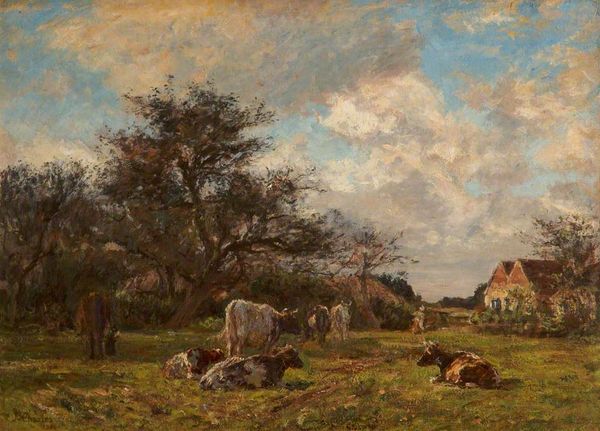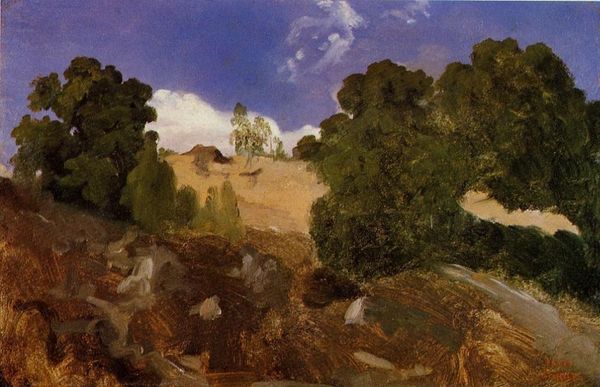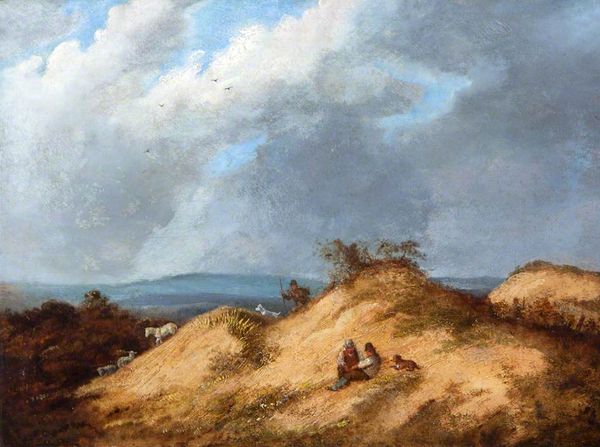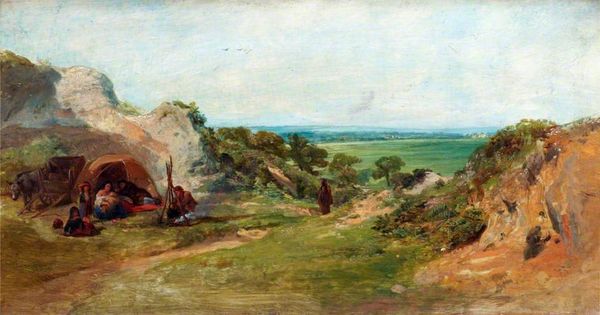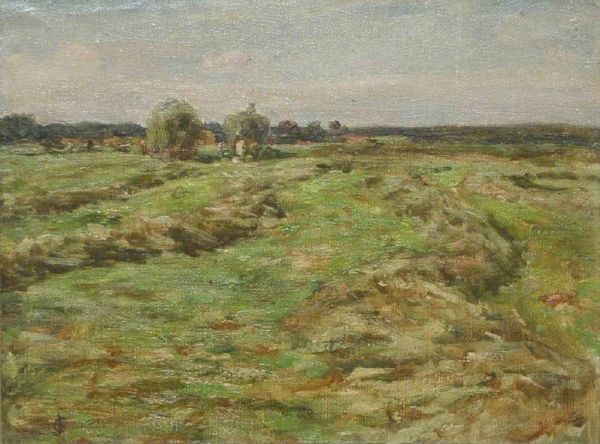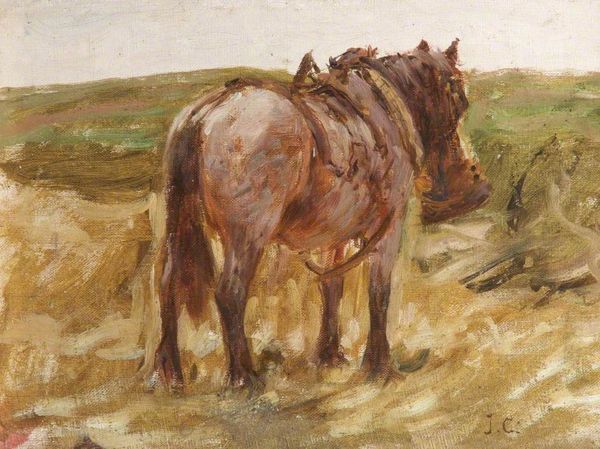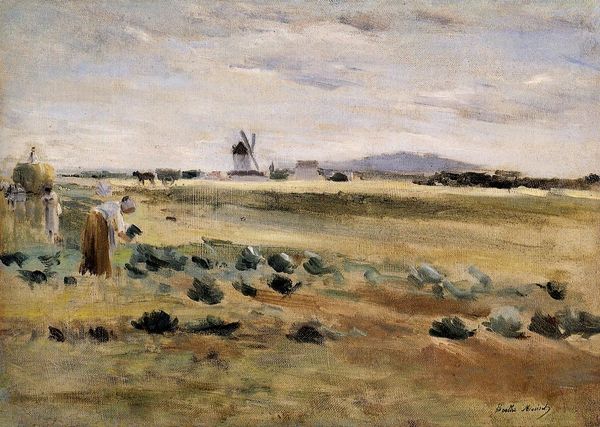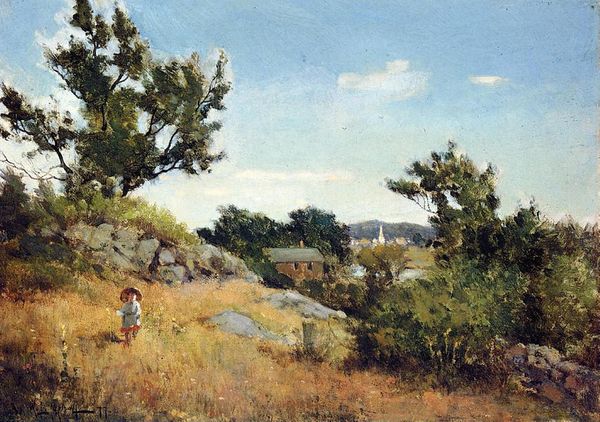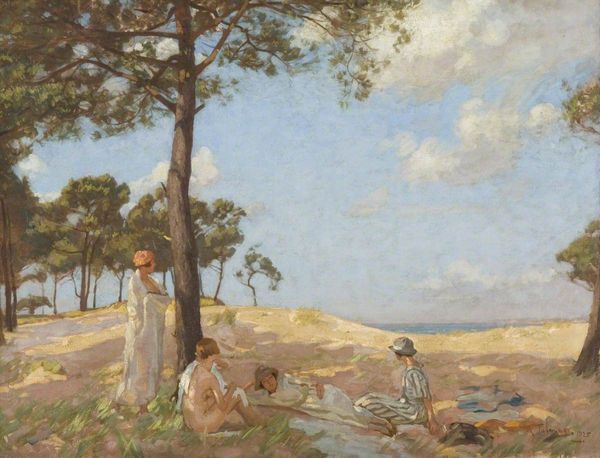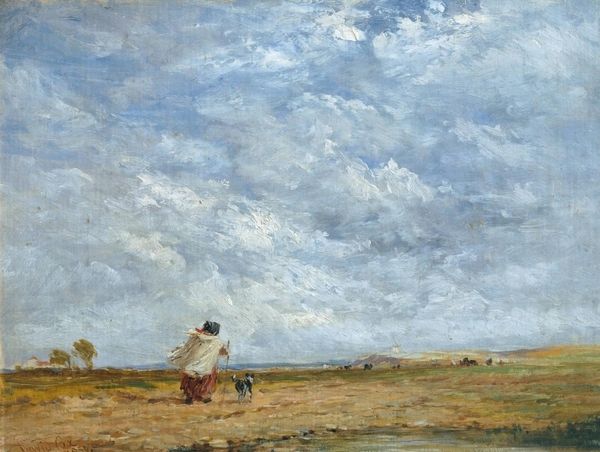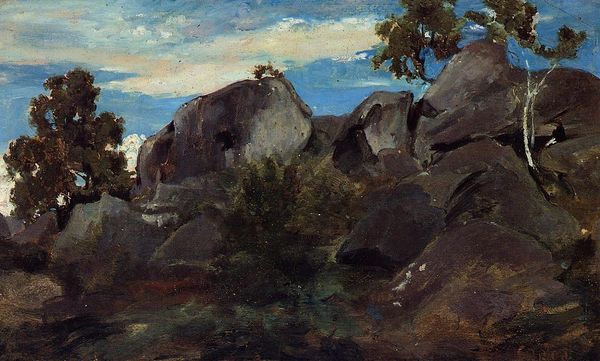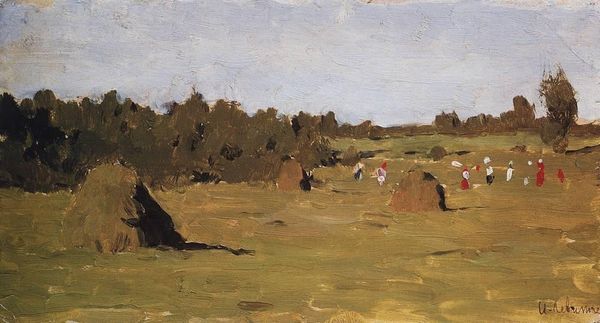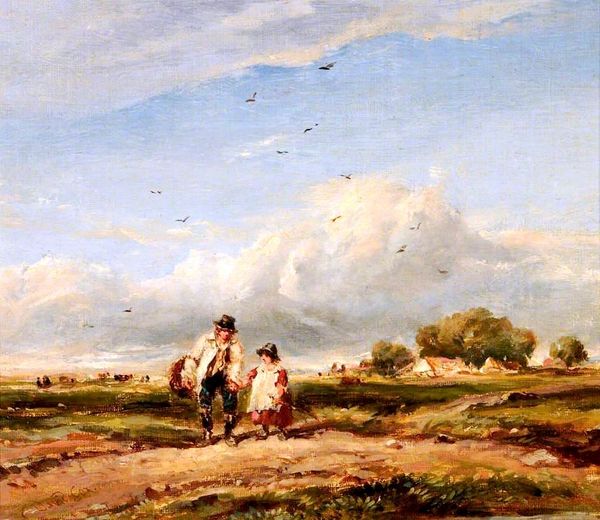
Copyright: Public domain
Curator: Immediately I'm struck by a certain stillness in this painting, despite the clear depiction of labor. Editor: That's interesting. Let's provide our listeners with a bit of background. This is "A Suffolk Harvest" by Algernon Talmage, painted in 1929. It's an oil painting that vividly captures a harvest scene. You've sensed stillness—do you find a disconnect between subject and effect? Curator: Exactly. The golden hues, the almost lazy brushstrokes... they evoke a feeling of warmth and contentment. But those stacks of hay and those laborers are loaded with implied exertion. The sky above feels almost dreamlike. The horse looks so resigned, standing by quietly. It all has an arcadian sentimentality that smooths over the work that is involved in harvesting, romanticizing farm life in a time of economic struggles for rural workers. Editor: It's true, there's a layer of idealized imagery. The artist chose a high vantage point, granting a wide scope. Yet this elevation could distance the viewer from the hard work on display in those haystacks, suggesting an observer rather than a participant. The inclusion of the harvest elevator shows some change from pure hand labor. Curator: These harvest scenes evoke collective memory. Fields of gold signify plenty. The symbolism extends beyond surface representation into an emotional narrative about the bounty and continuity of life. Yet it simplifies an era of agricultural distress, where symbols of agrarianism served as a conservative emblem, as modern life increasingly departed from that symbol of simplicity. Editor: I wonder if this painting, then, represents a sort of wishful imagining in a time of change. The painting captures a specific moment in the history of agricultural life and mechanization, but it filters that through a nostalgic lens, fitting into debates over rural identities and agricultural policy. It's plein-air, a transient scene made into an aesthetic commentary about the land itself. Curator: An emotional shorthand for an idea of stability during instability, perhaps? Looking at it this way reveals how images participate in larger dialogues about labor and land. Editor: Precisely, art can be a record, an invention, or a little of both. Curator: Always layers to uncover, adding further meaning across time.
Comments
No comments
Be the first to comment and join the conversation on the ultimate creative platform.
